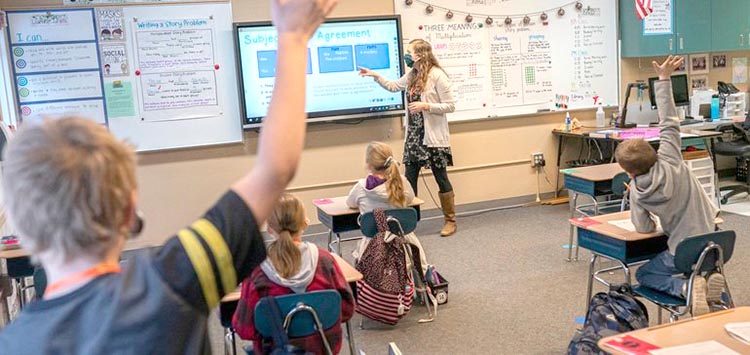
From K-12 Dive
By Lauren Barack
May 26, 2021
Dive Brief:
To facilitate a more inclusive classroom environment, Braxton Hall, an elementary special education teacher in Kentucky’s Shelby County Public Schools, worked with his co-teacher to develop three strategies to help create a team environment, he wrote for Edutopia.
To start, educators work together from planning to grading, and also make sure students know the two educators are teaching all of the students as equals. Next the two focus on ensuring they both spend time with each student, learning about each child’s strengths and where they need more support, and giving students multiple teaching perspectives on a lesson and different methods for arriving at a solution or answer.
Finally, both ensure they express positive and, if needed, corrective feedback, and students know each teacher is fully informed about any issues, further reinforcing students seeing the two as equals and a team.
Dive Insight:
Curriculum can be designed to create and encourage opportunities for students to collaborate, no matter their interests, backgrounds or strengths. Educator collaboration can build a baseline for this, providing students a foundational example to model in their own group work. There are also strategies educators can develop that can help foster more seamless collaboration.
To start, teachers may want to select the students who will be working together. This way, they can ensure groups are a good size with enough perspectives, but not so many that some students don’t get involved, according to guidelines from George Washington University’s Graduate School of Education and Human Development.
Even placing desks in a way where students can all see each other, rather than in rows, can encourage collaboration. And educators can also ensure their classrooms are stocked with materials that reflect diverse points of view and come from different perspectives.
Collaboration can also be encouraged for those students working remotely, and Common Sense Education recommends a variety of online resources, from design tools like Makers Empire to MURAL, an interactive whiteboard that can be adopted by K-12 educators.
When engaging in opportunities to work with peers of varying backgrounds and abilities, students are strengthening valuable collaboration and teamwork soft skills they can bring with them going forward in their studies or future careers, when they will also need to work side-by-side with peers who have different experiences and perspectives.
Photo: Nathan Howard via Getty Images
Read this and other stories at K-12 Dive

